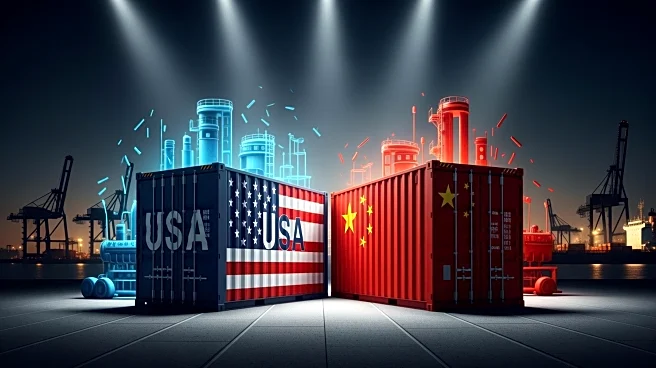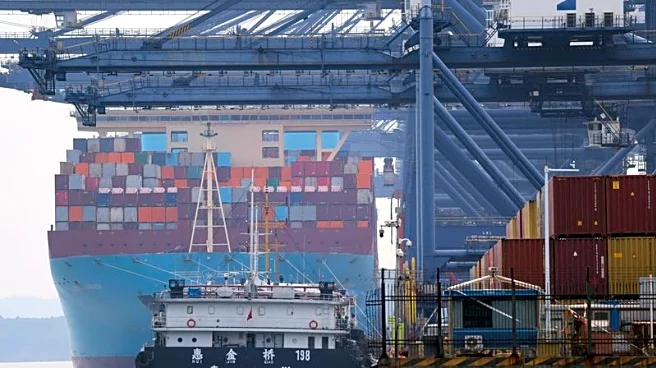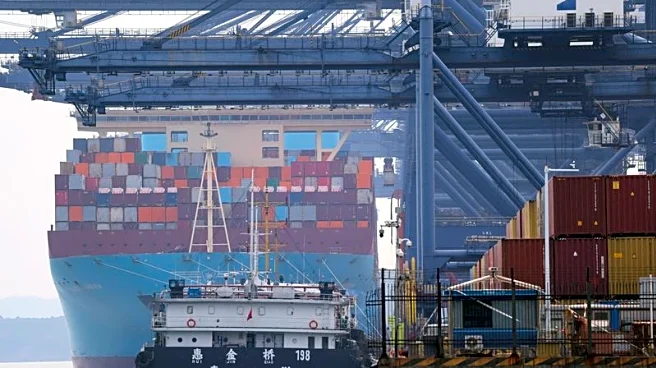What's Happening?
China's exports experienced a contraction in October, marking the first decline since March 2024. The drop of 1.1% in outbound shipments, measured in U.S. dollar terms, fell short of economists' expectations
for a 3% growth. This decline follows a six-month high of 8.3% in September. Concurrently, imports rose by 1%, missing the anticipated 3.2% growth, as the country's housing market downturn and weak job market conditions continued to suppress consumer demand. The trade tensions between the U.S. and China escalated during October, but a recent agreement between President Trump and Chinese President Xi Jinping has eased the situation. The deal includes rolling back punitive measures such as steep tariffs and export controls, with China committing to purchase more U.S. soybeans and collaborate on reducing fentanyl flows. As a result, the effective U.S. tariff rate on Chinese exports has decreased to 31%, according to Macquarie Group's estimates.
Why It's Important?
The decline in China's exports and the subsequent trade agreement with the U.S. have significant implications for global trade dynamics. The reduction in tariffs and export controls could lead to increased trade flows between the two largest economies, potentially stabilizing global markets that have been affected by the prolonged trade tensions. U.S. agricultural sectors, particularly soybean producers, stand to benefit from China's commitment to increase purchases, which may improve their competitiveness in the global market. Additionally, the agreement to address fentanyl flows could have positive implications for public health and safety in the U.S. However, the ongoing economic challenges within China, such as the housing market downturn, may continue to impact consumer demand and trade volumes.
What's Next?
The trade truce between the U.S. and China is expected to lead to further negotiations and adjustments in trade policies. Stakeholders in both countries will likely monitor the implementation of the agreement closely, assessing its impact on trade volumes and economic growth. U.S. agricultural producers may anticipate increased demand from China, potentially leading to expanded production and export activities. Meanwhile, policymakers in both nations may continue to address underlying economic issues, such as China's housing market and job conditions, to ensure sustainable growth. The global trade community will watch for any shifts in trade patterns and potential ripple effects on other economies.
Beyond the Headlines
The trade agreement between the U.S. and China may have deeper implications beyond immediate economic benefits. It could signal a shift towards more collaborative international relations, reducing the risk of future trade conflicts. The focus on reducing fentanyl flows highlights the importance of addressing cross-border health and safety issues, which could lead to further cooperation in other areas such as environmental protection and technology exchange. Additionally, the agreement may influence other countries' trade policies, encouraging them to seek similar resolutions to trade disputes.












